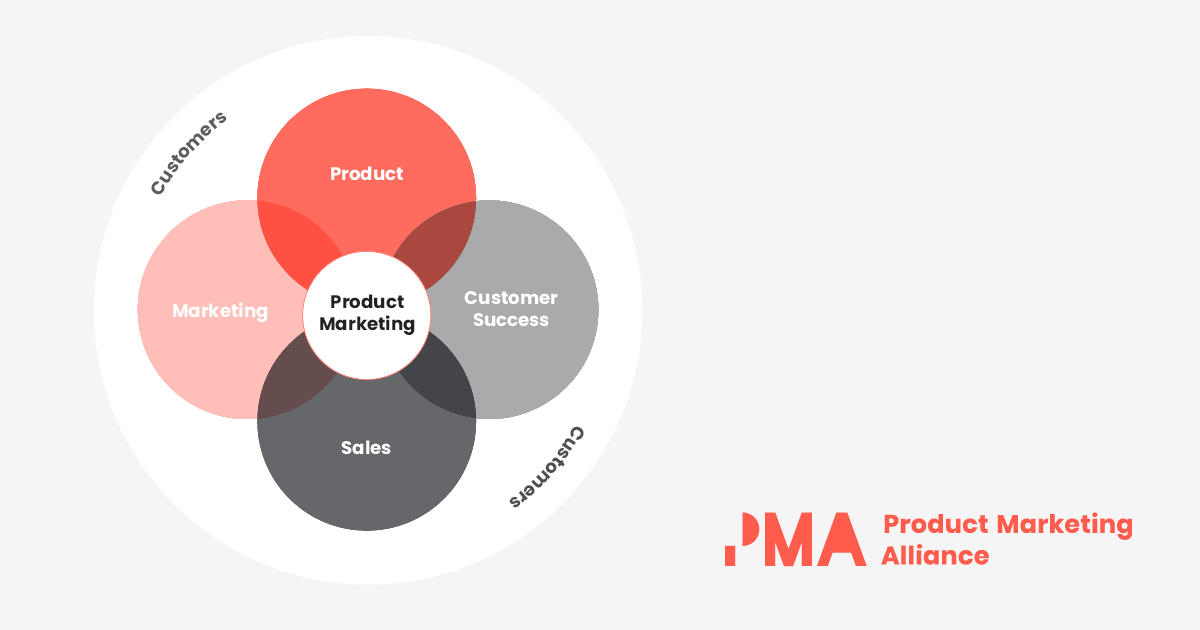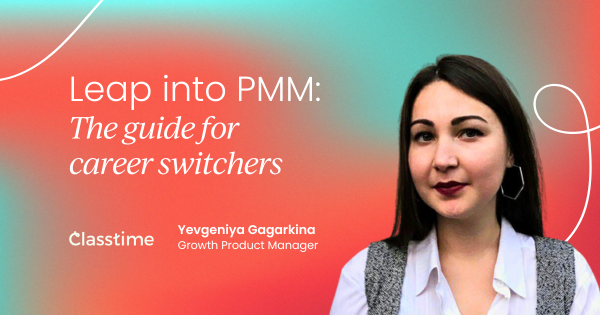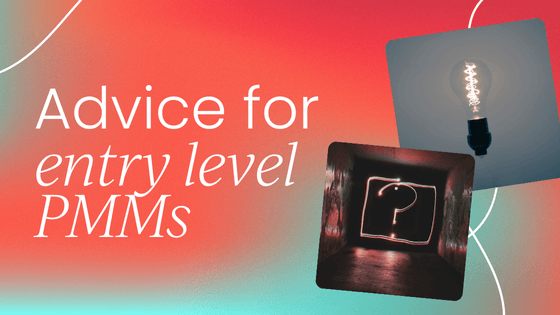Entry-level professionals often find themselves wondering how to climb the career ladder and make their mark in product marketing.
To shed light on this crucial topic, we've gathered insights from nine leading experts in product marketing.
These industry veterans share their wisdom on what it takes for newcomers to advance, offer practical advice for those already in the trenches, and reveal the key qualities that separate successful product marketers from the rest.
This article also explores valuable resources that can help aspiring product marketing managers (PMMs) enhance their skills and knowledge.
Jump to the section:
- What entry-level PMMs need to do to advance in their career
- Advice for product marketers plying their trade
- The most important quality needed to succeed in product marketing
- Extra resources to improve your product marketing knowledge
What entry-level PMMs need to do to advance in their career
Entry-level product marketing managers looking to advance in their careers need to focus on several key areas to stand out and grow professionally. This multifaceted role requires a blend of skills, from customer advocacy to strategic thinking and execution.
At the heart of a successful PMM's career is an unwavering focus on the customer. Francisco Bram, formerly at Uber Eats and current VP of Marketing and Business Development at Albertsons Companies, emphasizes the importance of being customer-obsessed: "Fight for your customers. A lot of times, PMMs will face the dilemma of supporting internal goals vs meeting external customer needs."
Bram advises always representing customer interests internally, even if it creates short-term friction. This customer-centric approach not only builds credibility but also positions PMMs to have a greater impact on strategic decisions.
As Bram notes, "These are the stories and experiences that will position you as a customer-obsessed product marketer helping you get promoted or nail that next job interview."
Equally crucial is the ability to multitask effectively. Jennifer Bunting, Head of Product Marketing for EMEA and LATAM at LinkedIn, describes product marketing as "a life of polar opposites," where one might switch from strategic work to sales coaching to content creation in rapid succession.
She emphasizes that "it's key for aspiring PMMs to be good at prioritization and multitasking. Listening and communicating. Strategy and execution."
This sentiment is echoed by Martin Bakal, former Product Marketing Director and Evangelist at OpenLegacy, who advises PMMs to "Understand the broad aspects of the role, know how to write, work on developing strategic initiatives, work closely with sales, and be flexible."
Beyond these core competencies, nurturing consumer empathy and honing storytelling skills are vital for career advancement. Matt Dehaty, former Head of Product Management and current Buying Director at Gymshark, considers these qualities fundamental: "For a PMM, I believe consumer empathy is mandatory plus storytelling, which is almost as important."
He notes that while other hard skills can be taught, these softer skills are essential for success both internally and externally. "Storytelling is as important internally to build momentum and support as it is for the consumer experience," Dehaty explains.
To round out their skill set and position themselves for growth, Su Simha, former Global Director of PMM at N26 and current Chief Marketing Officer at Ecosia, recommends that PMMs "work on as many products as you can gain global experience, earn a couple of feathers in your cap with some kick-ass launches and build a strong network and leadership skills."
Simha highlights the collaborative nature of the role, noting that "Half of the job of product marketing is working with everyone in the organization from product to sales to customer service to PR."
Advice for product marketers plying their trade
Product marketers navigating their careers can benefit from a range of advice from experienced professionals in the field. This guidance spans from aligning with business goals to continuous personal development and active community engagement.
Alignment with business objectives is crucial for success. Jennifer Bunting emphasizes this point: "Make sure you are aligned with the business goals. There's no room for passion projects. You must demonstrate the value that your work provides for business growth."
This focus on business alignment is complemented by Matt Dehaty's emphasis on consumer empathy. Dehaty notes, "Change is a given. The rate of change is actually increasing. Our job is to constantly improve the resolution of the picture of the consumer." He suggests returning to core purposes and missions to maintain this consumer focus amidst rapid change.
Continuous personal and professional development is another key theme. Bettina Jakobsen, former PMM at trivago and current Women@Google Chief Marketing Officer at Google, advises, "Be curious, get to know yourself with the help of different tools like Myers-Briggs, Strengthsfinder, ask for feedback and reflect on your past experiences constantly to spot where your strengths lie and know your developmental areas."
She also strongly recommends mentorship, both as a mentor and mentee, to explore leadership styles and develop coaching skills.
Martin Bakal stresses the importance of flexibility and continuous learning: "Stay flexible, be responsive to sales and focus on the delivery of content that people need. Also, keep reading and practice writing as much as possible."
Elliott Rayner, formerly at Babbel and current Director of Marketing and Growth at OWOW, adds a forward-looking perspective, suggesting that product marketers should “have a think on which products you believe will still be needed in the future, and what skills and insights you would require to work in that industry.
“At the same time, find a good mentor and also become a mentor to somebody else. The simple experience of learning from someone and teaching someone will be incredibly beneficial in the future.”
Community involvement is highlighted as a valuable resource for growth. Francisco Bram encourages product marketers to "get even more involved in the PMM community. Join online conversations, webinars, talks, send a LinkedIn message inviting a fellow PMM to a virtual coffee chat." He emphasizes that peer-to-peer learning can be incredibly beneficial, as others may have already solved challenges you're facing.
In the current landscape of remote work, communication skills have become even more critical. David Gilmour, former Director of Product Marketing at PayByPhone and current GTM Strategist at O2E Brands, notes, "Remote working has a lot of benefits but it also means you need to be more conscious than ever at communicating with your stakeholders." He also reminds professionals to prioritize self-care and stress-relieving activities.
Finally, Su Simha underscores the importance of constant adaptation: "There is never a time to get comfortable - no matter the circumstances." Simha encourages product marketers to delve deeper into digital areas, observe user behavior across all channels, and actively network with fellow professionals.
The most important quality needed to succeed in product marketing
Success in product marketing hinges on a diverse set of qualities, with industry leaders emphasizing different aspects based on their experiences and organizational contexts. While there's no single "most important" quality, several key attributes emerge as crucial for thriving in this multifaceted role.
Collaboration stands out as a fundamental skill, particularly in the eyes of Jennifer Bunting. She asserts, "Collaboration. PMMs are not successful alone. We must flex different muscles to partner with diverse teams and ways of working – engineering, product, sales, marketing."
This ability to work seamlessly across various departments is essential for integrating different perspectives and ensuring cohesive product strategies.
Curiosity and adaptability are highlighted by several professionals. Matt Dehaty, emphasizes the importance of curiosity, stating, "A curiosity and ambition to know more and try new things underpins growth at Gymshark."
This sentiment is echoed by Bettina Jakobsen who adds, "You need an appetite for learning, eagerness to connect the dots, patience if things don't pan out as planned, and you need to trust your cross-functional teams in the process."
Flexibility and strong project management skills are crucial, according to Martin Bakal. He notes, "Flexibility and project management. I work closely with all facets of the business and need to keep up with many tasks and make sure nothing gets dropped."
Samantha Wu, former Global VP Consumer Brand and Product Marketing at Meta, succinctly identifies three key qualities: "Product acumen, strong communication skills, and the ability to influence outcomes." These align closely with the role's demands for product understanding, effective messaging, and strategic influence.
Francisco Bram offers a comprehensive view, emphasizing the need for both hard and soft skills. He lists market sizing, segmentation, narrative design, go-to-market strategy, and measurement planning as crucial hard skills, while soft skills include passion, adaptability, cross-functional collaboration, prioritization, and executive presence.
Empathy is singled out by Elliott Rayner as a critical quality. He explains, "Empathy. It plays a key role in helping you understand your consumer, understand how to better collaborate with your stakeholders, and become a better team leader and manager."
Su Simha encapsulates the role's demands by describing a product marketer as "an amalgamation of many roles and is the guardian of the company story or brand to the customer." She emphasizes the importance of being "strategic, data-driven and a strong project manager" to succeed in this multifaceted position.
Extra resources to improve your product marketing knowledge
Jennifer Bunting emphasizes the importance of staying up-to-date with broader marketing trends. She recommends Product Marketing Alliance as a valuable resource, along with industry studies from eMarketer and WARC.
For those looking to develop both soft and hard skills, Matt Dehaty recommends books like Carol Dweck's "Mindset" and Ryan Holiday's "Ego is the Enemy."
He also highlights the importance of staying current with emerging technologies: "For hard skills, right now I'm personally diving into the world of 3D, Virtual and Augmented reality. The possibilities for these are endless and once mainstream will change everything."
Martin Bakal suggests reading about sales techniques, recommending "Seven Stories Every Salesperson Must Tell" and "The Challenger Sale." He also emphasizes the importance of staying informed about technology trends, especially for those in tech-focused industries.
Francisco Bram offers an extensive list of books and podcasts. His book recommendations include "Building a StoryBrand" by Donald Miller, "Pre-Suasion" by Robert Cialdini, and "Positioning: The Battle for Your Mind" by Jack Trout and Al Ries. For podcasts, he suggests "Marketing School" by Eric Siu & Neil Patel and "The Marketing Secrets Show" by Russel Brunson, among others.
David Gilmour echoes the value of PMA and adds Intercom and Hubspot as good content sources. He considers "Obviously Awesome" by April Dunford a must-read for product marketers.
Samantha Wu suggests a hands-on approach: "I also think about just being a power user and experimenting with different products in your space or vertical. Your experience can be very useful in understanding what is working and what is not."
And finally, Elliott Rayner offers a unique perspective on personal development for product marketers.
He shares an anecdote about product marketers often having contrasting hobbies, explaining, "That makes a lot of sense, as product marketers need to be able to understand people from all angles. So having a diverse set of interests and passions better sets you up to understand more people and also resist making narrow assumptions."
Product marketing career resources
PMM Hired
Our specialist resource PMM Hired offers everything you need and a whole lot more to climb the product marketing career ladder.
Unlock stacks of interview advice, vetted and tested resources from respected PMMs, and exclusive articles, with invaluable insights also available to PMMs with a PMA Membership.
Articles






Podcasts
Product Marketing Careers with Al Dea
Product Marketing Life with Collin Mayjack
Product Marketing Maestros: Tales from the Frontlines with Nitin Kartik
This is a consolidation of 9 previous articles on the website. The information was correct at time of writing but some might have changed since then. We have done our best to make sure that the information is accurate and up to date, including job titles. Any titles that have been updated are clearly stated.


 Follow us on LinkedIn
Follow us on LinkedIn

